Google Glass

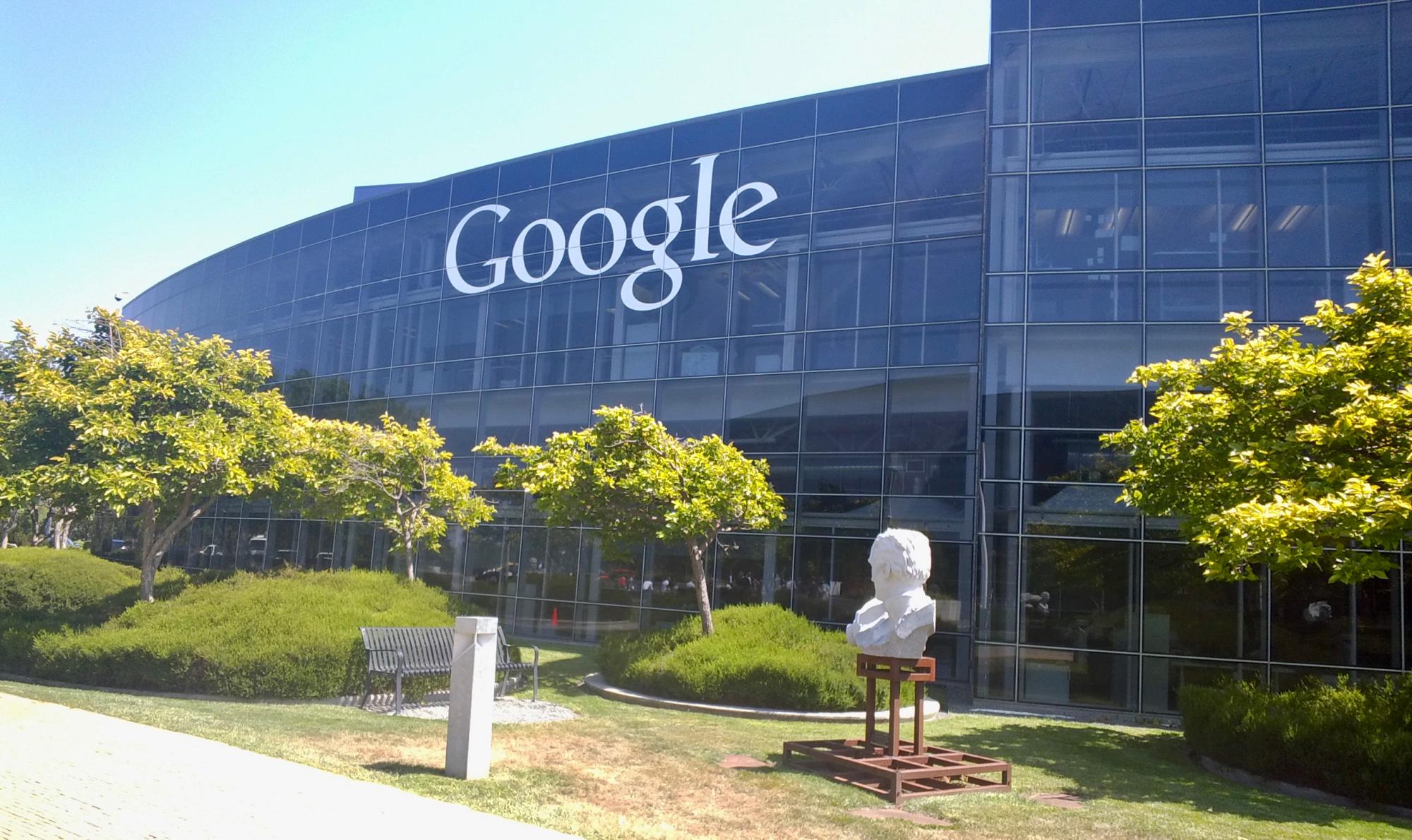

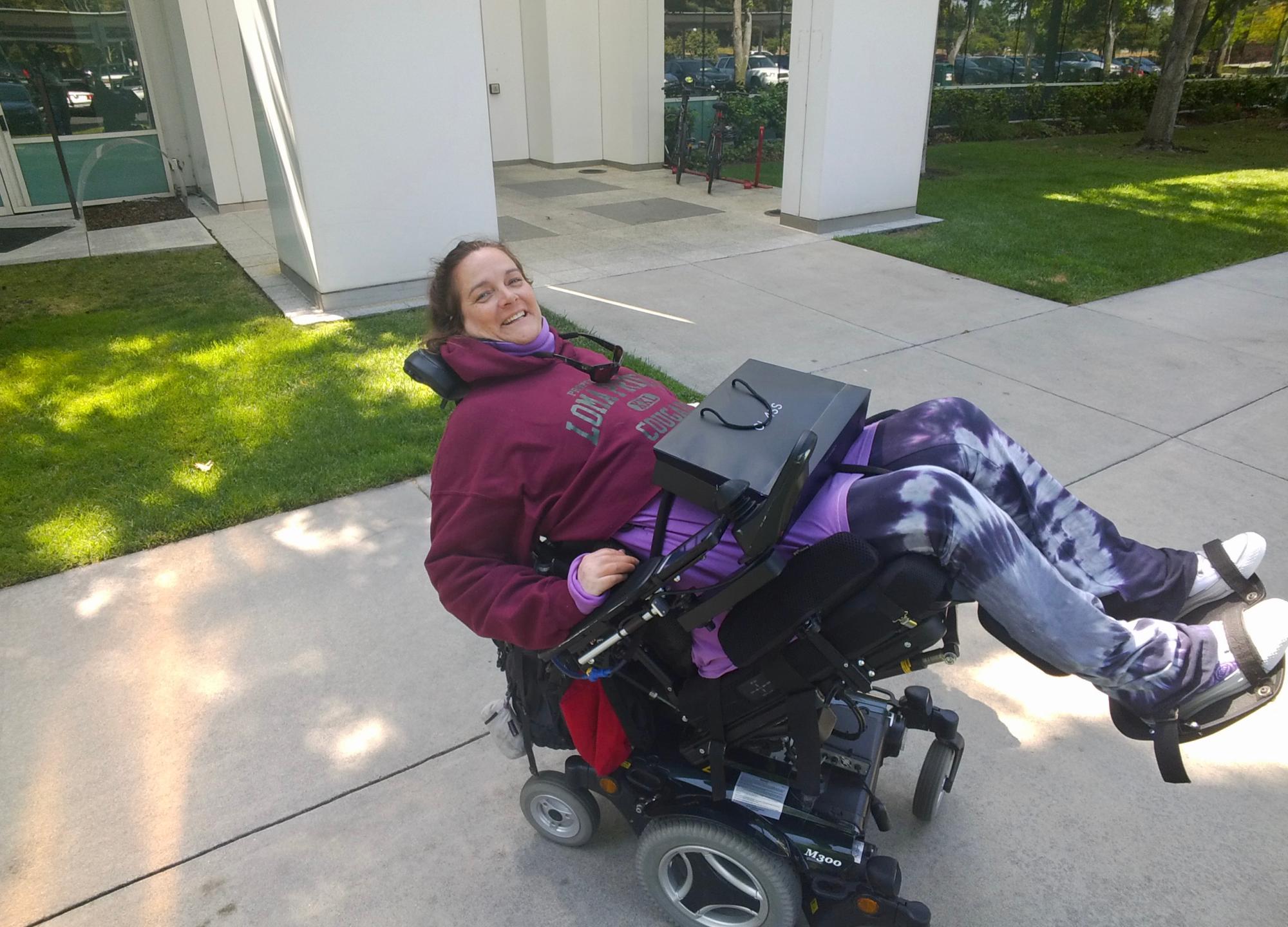


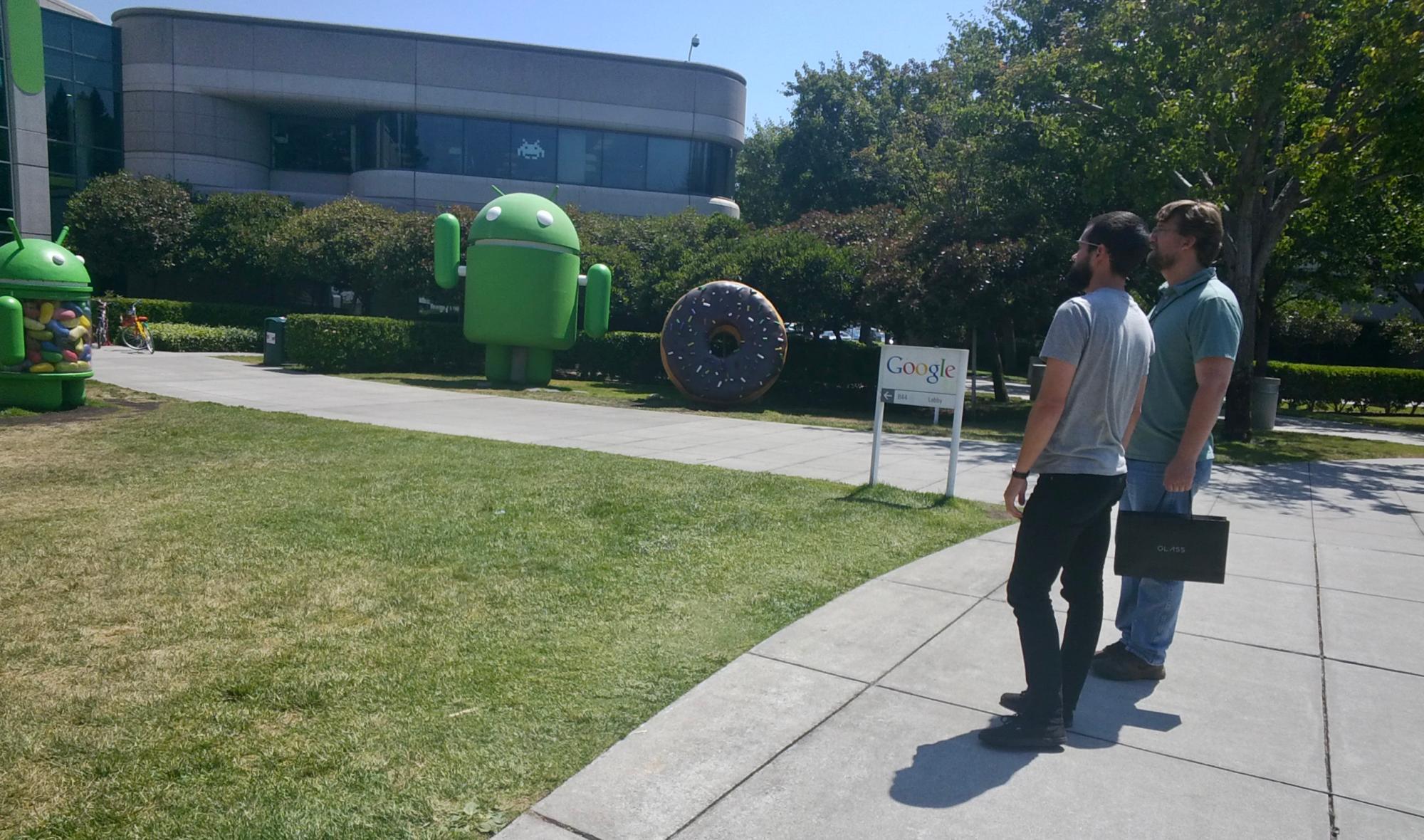
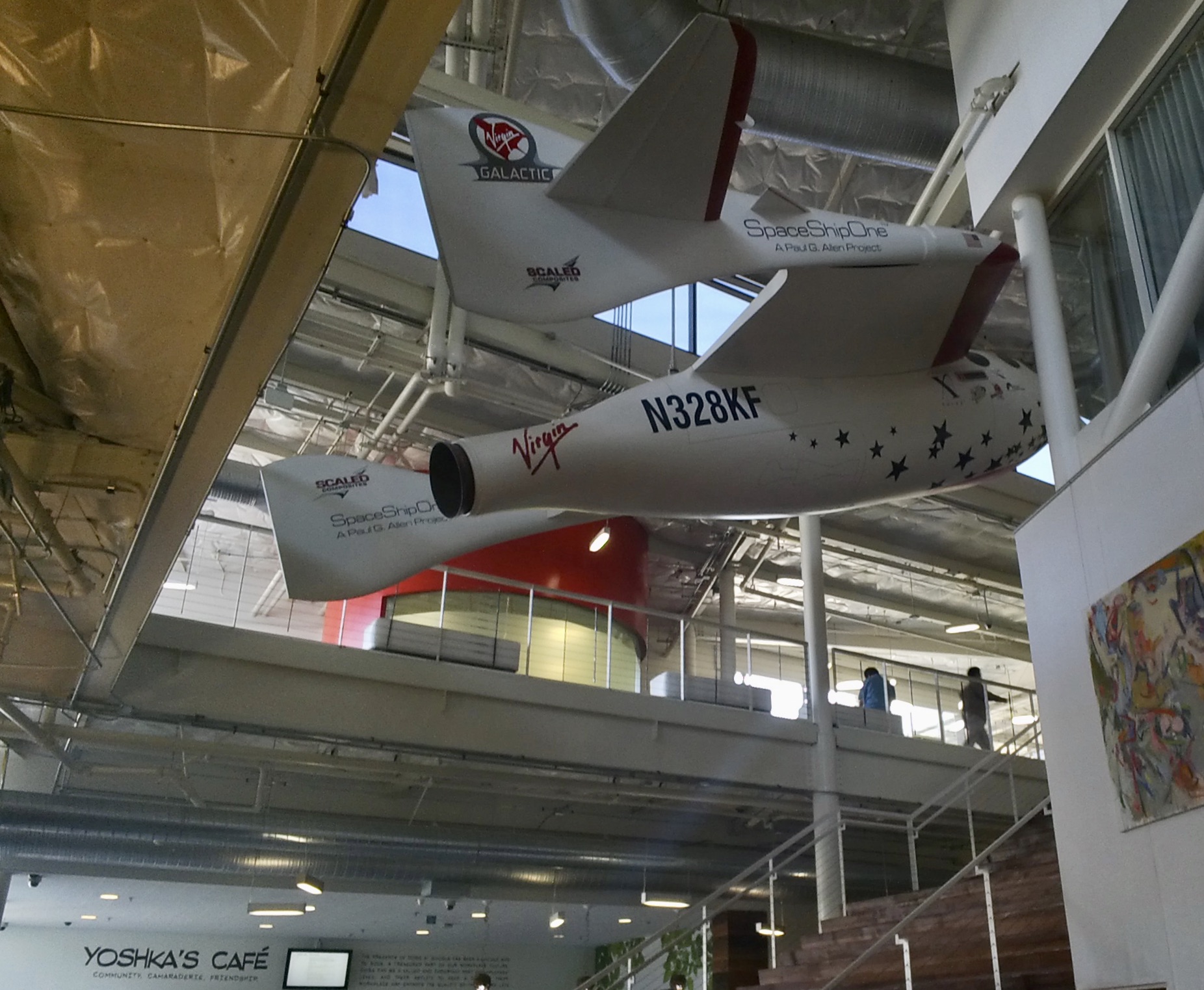

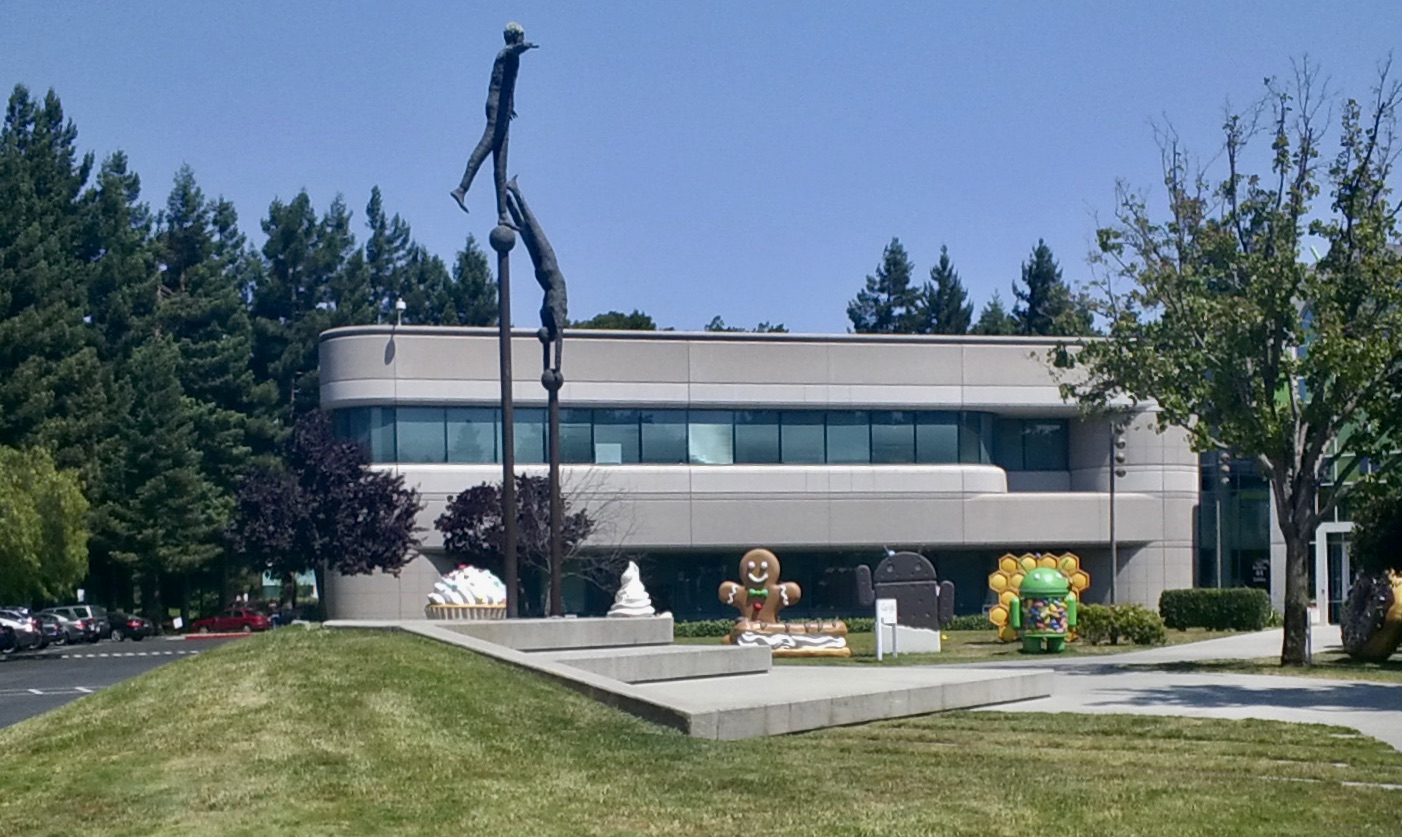

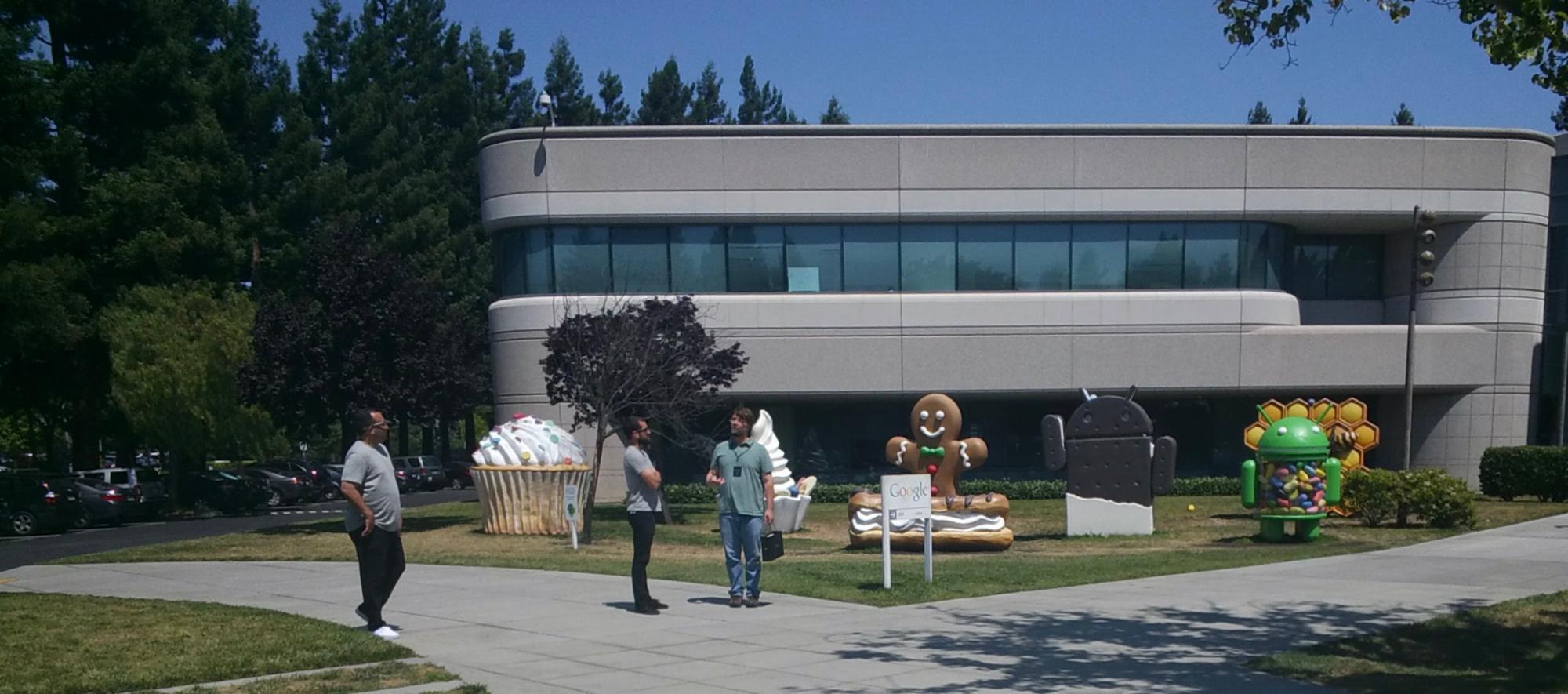



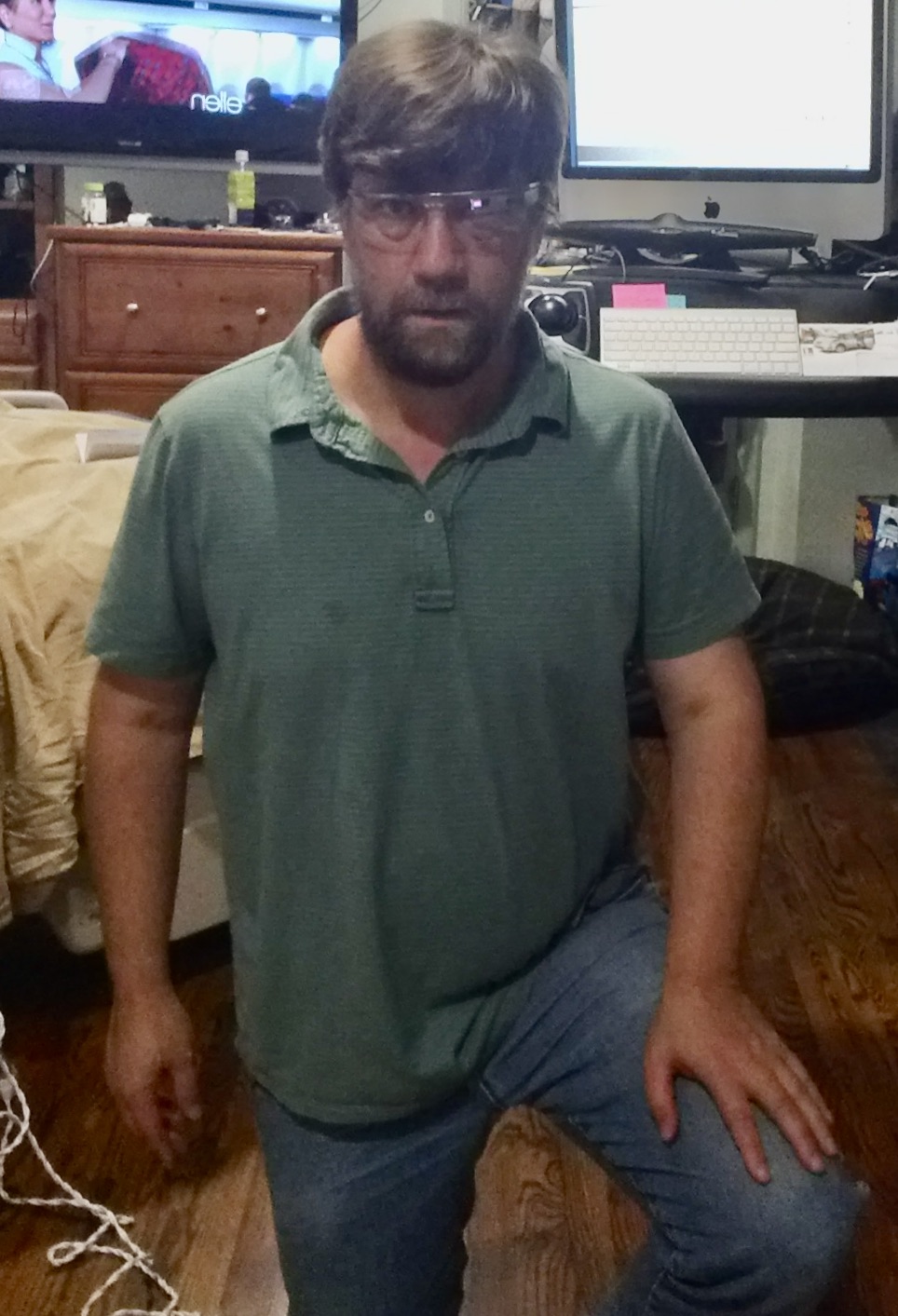

Washington Post
August 8, 2013, at 7:27 AM
Google Glass, other wearables may give the disabled a new measure of independence
Courtesy of Tammie Lou Van Sant - A photograph from Tammie Lou Van Sant's Google+ account, taken with Google Glass.
By Hayley Tsukayama, Published: August 6 E-mail the writer
It’s been 18 years since Tammie Lou Van Sant held a camera. But nearly two decades after a car accident left her paralyzed from the chest down, Van Sant is shooting again — thanks to a device that could be part of technology’s next big trend.
Google’s Glass headset, which connects to users’ smartphones and displays information on a screen that hovers above one eye, is the first of what analysts say may be a boom in wearable technology — headsets, watches, fitness trackers and other devices that are worn rather than slipped into a pocket. Analysts say growing interest in wearable tech could translate into big money for technology firms, with projected sales of up to 9.6 million such devices worldwide by the end of 2016.
The Washington Post’s innovations editor, Emi Kolawole, shows off what she’s encountered at SXSW, including an inside look at Google Glass. Post tech reporter Hayley Tsukayama talks about the growing wave of wearable tech and fitness apps and how it could collide with government regulation.
But the new technology also has raised new concerns about privacy. Lawmakers in Europe and the United States have asked Google to clarify its privacy policy in relation to Google Glass. For example, Rep. Joe Barton (R-Tex.) last month pressed the company for information on how it will protect the privacy of passersby who may not realize they are being filmed by the handset.
Google has told lawmakers it is “thinking carefully” about the privacy issues that have arisen along with its plans to bring Glass to the mass market as soon as next year.
But for some people with disabilities, the rise of wearable technology has given them a new measure of independence.
Google has distributed hundreds of handsets for testing. For Van Sant, 52, of Santa Cruz, Calif., being an early Google Glass user means a return to a much-missed photography hobby as well as the ability to answer her own phone calls, respond to text messages and take small trips on her own using the headset’s access to Google Maps.
“I just go out into the world now,” she said. “I can take pictures or do anything I want.”
Until now, wearable devices to help people with disabilities were — by and large — developed by medical companies or garage hobbyists who gave little thought to a wider consumer market. New consumer interest in wearables, however, means that people will have access to cheaper, more versatile devices that can run specialized apps developed specifically for the needs of people with disabilities, said Greg Priest-Dorman, who is advising Google on the Glass project and has been making his own wearable devices since the mid-1980s.
Researchers at Georgia Tech, working with Google, have discovered that a smartphone app that teaches parents to use sign language with their deaf children is used more often when integrated with the headset. Other researchers have used similar technology to help visually impaired users to crowdsource everything from whether an outfit matches to whether a child’s rash needs a doctor’s attention. With Glass, they can take a picture of their outfit, for example, then post it to an Internet forum for feedback.
Those small moments of self-reliance may sound trivial to some, but they can mean a lot to someone with disabilities, Priest-Dorman said.
“We don’t need them to live — they’re not breathing machines,” he said. “But it’s also an amazing feeling when you don’t need to be dependent on someone.”
Alex Blaszczuk, 26, who was paralyzed from the chest down in a 2011 car accident, said the little things Google Glass enables her to do are some of the most remarkable — such as joining in when her friends whip out their cellphones to look up the definition of a word or an actor in a movie.
Blaszczuk, a student at Columbia Law School, said she does get some strange looks from passersby, particularly those who cannot tell whether her Glass headset is related to the other devices she uses as a result of her disability, or those who wonder whether she is filming them. But that, she joked, comes with its own benefits, as well.
“I wore it on the plane, and they were all very careful about answering me,” she said. “I think it helps keep the staff in line.”
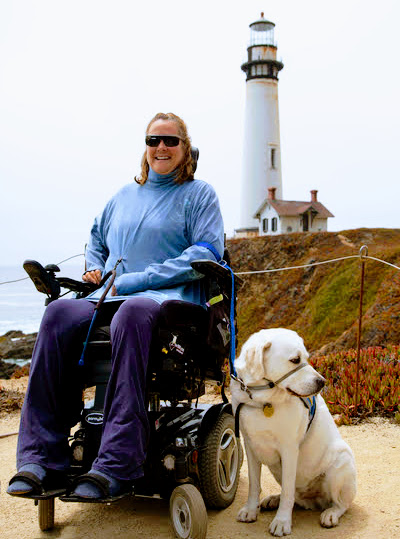
Articles written about Google Glass and me
Mashable
August 8, 2013, at 7:30 AM
OK, Glass: I Can't Walk, So Help Me Explore
WHAT'S THIS?
BY ADAM POPESCU
15 HOURS AGO
Tammie Van Sant grew up in the mountains above Santa Cruz, Calif., where she spent her days riding horses, building forts in the massive redwood trees, and hiking through the forests. Then a freak accident changed her life.
In the car on the way home from work on a rainy day, her truck collided with another vehicle, causing her to flip several times. The impact broke her neck, leaving her paralyzed from the chest down.
The road back from the edge of death was a turbulent ride. She knew she would never regain control of her body but wanted to return to some degree of normalcy. For almost 20 years, she searched for devices to help her accomplish tasks many of us take for granted, like typing on a keyboard, making phone calls, and snapping pictures. It was impossible for her to do any of those things herself.
So when she heard about Google Glass, she applied to be an Explorer, using a dictation program to explain how the device would improve her life.
"I figured, what do I have to lose," she told Mashable.
Van Sant was one of about 8,000 accepted to the program in May. She traveled to Mountain View, Calif., with her brother, forked over $1,500 and was fitted with a device.
Now, for the first time in almost 20 years, Van Sant, at 52, can take pictures, answer the phone and navigate around town on her own (well, with Glass' help).
"Google Glass has given me a whole new world," "Google Glass has given me a whole new world," she said. "For 18 years, I wasn’t able to take pictures whenever I wanted. I can’t even describe how amazing that is. I can answer the phone and actually hear the person on the other end and they can hear me. When I get a tex,t, I can read what the text says on the little prism and answer it."
In recent months, criticisms have swirled over Glass' sky-high price tag, its weak specs (you can't zoom into photos yet) and its physical appearance. For the profoundly deaf, worries surface about Glass' fit with hearing aids and cochlear implant interference.
But success stories from the disabled continue to surface. Alex Blaszczuk, 26, was paralyzed from the chest down in a car accident last year. Three weeks ago, she was handed a pair of charcoal frames. Before Glass, she told Mashable, she thought a normal social life would be out of her reach. But the high-tech gear has restored that part of her life.
She has run into problems with the device picking up her voice in crowded places, but contends it's been great for connecting with people. Of course, it doesn't fix disabilities, but it encourages self-expression and an involvement with an outside space, she added.
Google followed Blaszczuk on a recent camping trip with friends and documented her experience in a video. Watch it below:
Thad Starner, part of the development team charged with creating Glass, has sported augmented technology for the past 20 years. In the early 1990s, Starner created his own pseudo-Glass device almost two decades before working with Google. He said the point of Glass is to reduce the time between intention and action, which directly benefits the disabled.
"When you see the 'aha' moment when this tech can help in people's everyday lives, that is really quite amazing," he said. "You have somebody who can suddenly message their friends from their power chairs or send SMS from Glass, where before they were locked in their room. That's very powerful."Google is paying close attention to how people like Van Sant and Blaszczuk are using Glass. At Georgia Tech, the company is working on two projects aimed at finding Glass applications for those with muscular dystrophy and Parkinson's disease. A collaborative effort between researchers at Carnergie Mellon University and the University of Rochester focuses on using Glass to help the blind.
So while Glass may still be widely viewed as a status symbol, the future of the device may have a much deeper humanitarian impact than we envisioned by clearing a path for the disabled.
Google Glass is life-changer for those with disabilities
August 25, 2013 at 4:17 AM
Google Glass is life-changer for those with disabilities
Friday, August 23, 2013
Jonathan Bloom
More: Bio, E-mail, Facebook, Twitter, News Team
SAN FRANCISCO (KGO) -- Google Glass probably won't go on sale to consumers for another year. But for one Bay Area woman, it's already been a life-changer. For someone living with a disability, the futuristic gadget is far more than a toy.
It's something Tammie Lou hasn't been able to do for almost two decades. A car crash in 1995 left her mostly paralyzed. Since then, life has been about finding workarounds."You just have to learn a whole new way to live," she said.
Her brother installed home automation.
"I can turn all the lights on in here," Tammie said. "I can change the channel."
Her service dog can open doors and turn on lights. But without mobility in her hands and fingers, Tammie had to give up a lifelong hobby.
"Taking pictures was big, I loved to take pictures," she said.
For years, she asked other people to take the pictures, but it wasn't the same. So she entered a contest to be among the first users of Google's new wearable device called "Glass."
And she won.
"It just opens up a whole new world that you just can't even imagine," she told ABC7 News.
Tammie was invited to Google's Glass Base Camp. A big room overlooking San Francisco Bay is where the earliest adopters, called "Explorers," go to be fitted for their glass devices by Google staff members.
"The team met her and she was just so enthusiastic and excited about the technology and just such an inspiring person to be around," recalled Google Glass communications manager Anna Richardson.
Tammie, it turns out, isn't the only quadriplegic Explorer.
"The last time I tried to go camping was the time I was in a car accident," Alex Blas-Chuck said.
She used Glass to make a video about her return to life after paralysis.
"This trip will be the first time I'm apart from a caregiver for more than just a few hours," Blas-Chuck said.
For Tammie too, a device she can operate with her voice and head movements is a game changer.
"Just being independent," she explained. "I can get out and I can go farther because if I need something, I can text. I can use the phone."
Now, Tammie cruises around town taking pictures for her blog and when she travels with her family, she uses Glass to find restaurants and get directions.
"I'm helping everybody out instead of everybody helping me out. You know? Now, it's just amazing," she said smiling. "I'm in. I'm in the game."
http://abclocal.go.com/kgo/story?section=news/technology&id=9215989
USA today interview...
October 22, 2013 at 10:27pm
Beyond a gadget: Google Glass is a boon to disabled
Google's latest and greatest 'enables' disabled
Google Glass, the hands-free headset that functions similarly to a smartphone or a computer, is a boon to Columbia University law school student Alex Blaszczuk, paralyzed since 2011. See how the emerging technology of Glass may help the disabled.
Kevin Kepple, USA TODAY
Marco della Cava, USA TODAY 4:03 p.m. EDT October 23, 2013
Researchers are working hard to harness the hands-free nature of Google Glass to improve the lives of those with compromised mobility, vision and hearing.
For the blind, deaf or paralyzed, Glass may offer a better life
The device's hands-free, voice-activated nature is an advantage over pocket-bound smartphones
Says one blind Glass user: Imagine if Glass could recognize a cab and let me know it was coming
SANTA CRUZ, Calif. — Autumn in Northern California can bring out the shutterbug in anyone. Leaves morph from green to gold, seals and otters dot the blue Pacific. Tammie Lou Van Sant loves to head out on such photo safaris, sometimes posting dozens of shots a day to social media sites.
No big deal — unless you consider that Van Sant, 52, is paralyzed from the chest down, possesses no digital dexterity and has been waiting nearly two decades since breaking her neck in a car accident to do something seemingly as simple as snapping a picture.
"I think I've taken a photo of everything in Santa Cruz," says Van Sant, her grin stretching ear to ear. "It is just awesome."
The "it" in question is Glass, Google's wearable computer that last summer found its way onto the faces of about 8,000 Glass Explorers, people who, like Van Sant, wrote the search engine juggernaut with a compelling reason why they should be among the first in the world to acquire the $1,500 invention.
Although a number of scientists have been toiling in obscurity since the 1970s on glasses that harness computing power, Google was first out of the commercial gate with a lightweight, voice-controlled device that features a small square prism just off the right eye and a touch-sensitive temple. Through voice and touch, Glass can shoot pictures and video, make and receive calls and texts, and access the Web.
Glass has an expected on-sale date sometime in 2014. As a product still in its infancy, it recalls the iPhone's early days as a smartphone with promise and woefully few apps. But while Glass' full potential will be determined down the road, it already has distinguished itself as a potentially life-changing tool for the disabled.
Researchers in a range of disciplines are looking into ways to leverage Glass' inherent advantage over the smartphone — its hands-free nature — to help those who navigate life with compromised mobility, vision and hearing. There's even work being done to assist those with autism, using facial recognition software to help identify the emotions of others.
Perhaps not since the invention of text-to-voice and other speech-recognition software has a tech invention had such potential to help the disabled.
"Glass will be revolutionary for the disabled," says Rosalind Picard, founder of the Affective Computing Research Group at Massachusetts Institute of Technology's Media Lab, whose focus is autism and communication technology.
"With facial analytics, it's possible to, with the subject's approval, have Glass scan a face and put up a green light if the person is intrigued, yellow if they're confused or red if they're bored," she says. Then, chuckling, she adds, "It could even whisper at you during that date, 'Hey, she's losing interest.'"
Picard says speech recognition is getting so good that a deaf person soon could see a real-time transcript of what a friend is saying in Glass' prism. A person with limited vision could take walking directions from Glass through its bone-conducting speaker housed in the right temple.
"One day soon, we'll look at regular glasses the way we now look at old phones," she says. "It will change things so much."
What pleases Mark Perriello is that, thanks to the feedback-intensive Explorers program, Glass is being developed with input from the disabled.
"All too often, technologies are created and then people ask, 'OK, what if people with disabilities need to use it?'" says the CEO of the American Association of People with Disabilities, a Washington, D.C.-based advocacy group founded in the wake of the 1990 Americans with Disabilities Act.
"From taking a picture with ease to helping those with low vision redefine their world," Perriello says, "this has the possibility to level the playing field."
A GLASS ACT
Wearable computers have always been about increased accessibility, says Thad Starner, who has been toting around computerized glasses of his own design since 1993. In 1998, he demonstrated his creations to a pair of Stanford University students named Larry Page and Sergey Brin. Google's co-founders contacted Starner three years ago and made him Glass' lead designer.
"I could cite academic papers for you, but Larry says it best, 'With Glass, we are reducing the time between intention and action,' " Starner says. "Glass keeps you in the flow of what you're doing, and for people with disabilities, that's even more vital. Suddenly someone isolated at home is more fluent with (text) messages than their friends with a mobile phone. It really can change lives."
For many scientists, the thrill is in trying to turn sci-fi dreams into today's reality. But for some, the quest is personal.
Catalin Voss has a cousin with Asperger syndrome, a high-functioning form of autism; that has led the precocious German-born Stanford University sophomore to found Sension, a company whose missions include developing Glass software that turns the expressions of others into on-screen keywords like "happy" and "angry."
"Emotional recognition (software) is still in its early days, at about the state of a 3-year-old, but I still felt passionate about trying to do something meaningful," says Voss, whose software maps 78 points on the face. "From my personal experience, I know that the issues (for my cousin) are recognizing an expression, and then smiling back. Glass is good for the first, and can help with the second."
As a youngster, Kim Xu used to attend Girl Scout meetings at the home of a girl whose brother was deaf. Fast-forward to last year, when the Ph.D. candidate in human-centered computing at Georgia Tech co-created SMARTSign, an app that pushes out short video tutorials on American Sign Language.
"For my Ph.D., we studied how six families with deaf children used the app," which is also available for Android phones, says Xu, who now works for tech consulting firm Tin Man Labs in Huntsville, Ala.
"Seeing them learn at a faster pace was so satisfying. But it was clear that by using (the app with) Glass, people were able to learn at a more constant pace," she says. "With a phone spending so much time in your pocket, you don't really have it out in front of you as much as you think."
Shaun Kane can appreciate the merits of Glass perhaps a bit better than most researchers. His own physical disability limits him to the use of one arm while he works on ways to help the visually impaired through technology.
"One of the most basic challenges for many disabled folks is just getting around every day carrying stuff, getting things out of pockets and things like that," says Kane, assistant professor in the department of information systems at the University of Maryland in Baltimore County. "If I have something in one hand, that's it for me."
Kane has been using Glass daily since August, mostly to snap photos on the go. But he's bullish on the device's potential to vastly improve quality of life for the blind. "Having something on your head that is pointing naturally in the direction you are looking is invaluable," he says.
Jeff Bigham, who conducts research in the same area, agrees. "Imagine this," he says, excitedly. "A blind person with Glass walks by a store and Glass recognizes it and announces what it is. Maybe that person didn't notice that it changed from a restaurant to a dry cleaner, but now he knows. These are things the rest of us take for granted, but for a blind person, it's truly powerful."
Bigham, an assistant professor at the Human-Computer Interaction Institute at Carnegie Mellon University in Pittsburgh, has developed software that in fact can do such things. A video he posted on YouTube shows a blind man wearing glasses walking through a room filled with equipment, and each time a piece comes into Glass' view it describes the apparatus to the wearer.
Glass' other big score comes in a simpler form. Bigham's VizWiz is a smartphone-based project that has seen 5,000 blind users ask more than 70,000 visual questions ranging from "What's this spot on my baby's head?" to "Do I look nice?" — questions and photos that are then sent out to the Web and answered in less than a minute by live respondents working through Amazon Mechanical Turk.
Where smartphone-based VizWiz users have to contend with the inherent hassle of "using a handheld device while blind, Glass offers the chance to provide continuous, hands-free visual assistance," Bigham says.
When Larry Kaplan wrote in to Google's #ifihadglass contest, he wasn't looking to use them himself. Instead, Kaplan, who sells discounted sneakers online, wanted to make Glass available to the ALS patients he has befriended as a local volunteer over the past 15 years.
"When you have ALS (also known as Lou Gehrig's disease, which cripples motor functions) you often don't feel like a part of full society, and I thought maybe wearing Glass could help," says Kaplan of West Chester, Pa. "It's been amazing. Some patients have no use of their hands, and others are losing their vocal abilities. But they talk to Glass and it understands them."
One of the beneficiaries of Kaplan's gesture is Gary Beech, a retired IRS tax examiner from Philadelphia. "It's very comforting to know that people in my position can still experience some things they might not be able to in life," Beech writes in an e-mail. "Glass can be worn by somebody outside watching a soccer game, and I can watch it all happen at home on a computer. Truly amazing."
STILL A WAYS TO GO
One blind Glass Explorer says the potential for greatness lies just beyond the product's initial limitations.
"I'm a little frustrated with (Glass), not because it's something I can't use, but because with trivial modifications I would use it all the time," says Sina Bahram, founder of disability-focused Prime Access Consulting in Cary, N.C., and a Ph.D. candidate in computer science at North Carolina State University. "It's not pie in the sky. For me, Glass could be an amazing conduit to the outside world."
Among his complaints are a volume control that is "embedded too far deep in the menu," a hypersensitive temple touch pad and a "ban on facial recognition (out of privacy concerns) that really hurts those of us who are blind."
Bahram is at least hoping for object recognition to become a reality. "Think about what it's like for me to hail a cab," he says. "Now, picture me wearing a device that sees a cab heading my way, and alerts me to it. That's a paradigm shift."
For Columbia University law school student Alex Blaszczuk, Glass didn't need to deliver a seismic boost but rather just lift her occasionally sagging spirits.
Alexandra Blaszczuk, 26, of Chicago, became paralyzed from the chest down after a car accident in 2011.(Photo: Eileen Blass, USA TODAY)
Two years ago, she was on the verge of graduating with her law degree when an oncoming car hit hers while she was traveling in Vermont, leaving her paralyzed from the chest down. With great effort, she has returned to Columbia, where she uses Glass to help her research and communicate with friends and social networking circles.
"My life now is about learning to accept that some things are not available to me," says Blaszczuk, 26, a Chicago native who is fluent in Polish and focusing on international transactional law. "But when I took my first picture with Glass, I smiled and thought, 'That's one less thing I have to be OK with not being able to do.'"
She says an eventual improvement in voice-command technology should make using a device such as Glass even more beneficial, cutting valuable and frustrating time off chores that the non-disabled take for granted, whether answering an e-mail or responding to a text message.
But in the end, the biggest gift Glass gives her is that of feeling normal.
"People with disabilities often are seen either as tragedies or heroes," she says. "But when I'm using Glass, I'm just like anyone else. I can post a stupid cat picture or a shot from a tour of Brooklyn that I took. That kind of self-expression means I'm not limited to being a stereotype."
Santa Cruz's Van Sant is all about self-expression this time of year. Her modest home that she shares with her mother is overrun with Halloween decorations, including three fake graves on her front lawn and a skeleton that writhes in electrocuted pain as you make your way up her wheelchair ramp.
Inside, there's more of the same festive ghoulishness, along with an overly friendly Labrador service dog named Robby who can open doors and windows but is far more interested in being caressed.
Van Sant takes Glass off only to sleep, preferring to have her device handy for that unexpected amazing-pets video or perhaps a breathtaking sunset. The device may seem like a wacky cyborg-like gadget to many on this planet, but for this woman, it has brought a sense of joy that was long banished after a truck hydroplaned, flipped and crashed into her car on a rural highway south of here.
"I'm out more doing stuff since I got Glass, interacting with people and the world," she says. "Sure, sometimes people see me talking to Glass and assume I'm weird. But most times they come up and go, 'Oh, I've heard of those, can I see them?' "
Robby suddenly bounds out of his dog bed over to a visitor with puppy energy; Van Sant apologizes and asks the dog to lie down.
"I waited almost 20 years to be able to take a picture," she says softly, shaking her head in quiet amazement. "I simply can't imagine anything more useful to me."
Robby stands up again. Van Sant sighs.
"Well, other than an invention that would make my dog mind me," she says, laughing. Then, smiling at a contrite Robby, she commands: "Glass … take a picture."
Google's Glass deserves a second life after a miscue
Marco Della CavaUSA TODAY
SAN FRANCISCO — O.K., Glass, what's next?
On Google's earnings call Thursday, CFO Patrick Pichette noted that "when teams aren't able to hit hurdles … sometimes we ask them to take a pause and reset their strategy."
He was talking about Google Glass, a futuristic and often maligned attempt to topple the smartphone with a wearable computer.
Last month, after two years of peddling the $1,500 device to a hand-selected group of Glass Explorers, Google announced it would stop sales, move the division under Nest founder Tony Fadell and go back to the whiteboard.
That announcement wasn't a surprise; reports had surfaced that even Googlers working on Glass weren't sporting the product. But it was a shock. Companies like Google and Apple rarely hit a full reset on a major product.
The ensuing crowing, which may echo again after Pichette's concession, had some justification. Wearing Glass made one at best feel like an extra in Star Trek and at worst a tic-filled, temple-tapping dork at risk of bumping into strangers.
What's more, the product as developed just couldn't do enough. Imagine an iPhone with only a handful of apps. Fascinating possibilities, but half-baked.
All that said, Glass in some form should live on. It's hard to say otherwise after spending time as I did with Tammie Lou Van Sant, 53, of Santa Cruz, Calif., who was paralyzed from the chest down after an automobile accident.
For Van Sant, having Glass meant being able to take pictures while on her wheelchair adventures and sharing them with friends online using only her voice.
"When I'm using Glass, I'm just like anyone else," she told me. "I can post a stupid cat picture or a shot from a tour of Brooklyn. It means I'm not limited to being a stereotype."
Glass also changed the world of fireman Patrick Jackson of Rocky Mount, N.C. The device not only allowed the tech-savvy first responder a reason to practice his coding skills but inspired him to come up with a special application for Glass that would allow him to get to fires and find fire hydrants faster by having the surface in the upper right corner of his field of view.
"For years, firemen had to try and memorize all these things, or just learn them on the fly," said Jackson, 35. "What I've developed is a work in progress, but I'm convinced it is something that will be very useful."
Useful is indeed the magic word. And "magical" is not. The latter is a facile bon mot that is used far too often and easily in the tech world. The reason we adore our smartphones is that they are useful, not enchanting.
So here's why Glass 2.0, if done right, could fly:
First, as much as wearable tech seems to be pivoting to our wrists of late (cue everything from Fitbit to Apple's upcoming iWatch), having information flash in front of your eyes is positively invaluable for anyone living a hands-free life.
Second, as cool as immersive eyeglass experiences such as Oculus Rift and Meta 3D may be, there will always be room for a delicately designed and unobtrusive — ie, not Glass 1.0 — wearable computer that lets you go about your day unhindered.
And third, timing is everything. The reason the first iPhone rewrote the smartphone rules wasn't because Steve Jobs said it should. When it bowed in 2007, the world had already become addicted to having a pocketed device that could improve our work and personal lives. The iPhone scored because it promised to do what our cellphones were doing, only much better.
Right now, Glass can't offer to improve my day-to-day existence, even if it has already immeasurably changed the lives of others. But I'd be willing to bet that after Google's team pauses and resets, the result may soon find its way back to our faces.
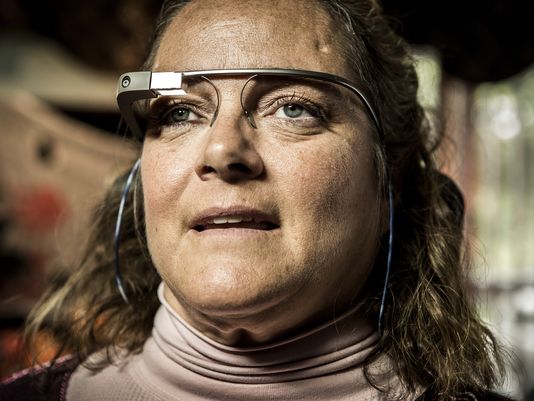
How will Google Glass help Disabled People?
Google Glass is a game-changing technology that we will look back to and wonder how we did without it as we do with mobile phones and WiFi!
New developments design for mainstream usage is, in fact, becoming more inclusive and giving more options for people living with disabilities. Google Glass is one such piece of equipment.
What is Google Glass?
Google Glass is a wearable computer that comes with an optical head-mounted display that is working towards the full development of a ubiquitous computer. Google Glass is being developed as part of the larger Project Glass research and development project. It takes smartphone technology and makes it even more accessible. It displays the information just like a smartphone in a hands-free format which allows for communication with the internet through natural voice commands.
The Google Glass
Google Glass is fitted with a touchpad on its side and it allows users to control it by swiping through its interface on the screen. The interface is much like the standard timeline we’ve come to be familiar with and this swiping motion is the only physical action needed to operate the Glass.
Voice actions are the main way of controlling the device and activating the Glass is as simple as tilting the head upwards (to approximately 30° or a preferred angle that can be altered) or tap the touchpad and say ‘OK Glass.’ Once the Glass is activated only voice actions are required and you can access the range of different facilities offered by the product. Everything from ‘Send a message to Mum’ to ‘get directions to the nearest ATM’ can be found. Search results will be filtered and then read back to the user so they can choose the most fitting one.
Google uses innovative bone conduction through a transducer in the product which renders the sound virtually inaudible to others around you, allowing for a private yet interactive computing experience.
The Google Glass headset can be simply connected to your smartphone and the display is a small information screen that hovers in front of one eye. Experts in the field are describing this as the first development in what will be the next big trend – wearable technology. Rather than slipping your smartphone into your pocket, you could find you’re utilizing glasses, watches and other wearable devices in the near future. Prospective analytics suggests that wearable tech has the potential to be big business with sales projections for the Glass reaching 9.6 million by the end of 2016.
Google Glass for Disability
For disabled people living Google Glass presents an even bigger opportunity. An opportunity to make their environment more accessible through information. The Glass is much more than a new toy, it can be life-affirming or even life-changing. Technologists suggest that speech recognition is reaching new levels of precision. They’re actually working towards profoundly deaf people being able to see real-time transcripts of what friends are saying to them in the Glass’ prism. It really could revolutionize communication for many.
Equally, the Glass could also be extremely useful for people with visual impairments – with suggestions that it may be possible to take walking directions from the Glass further opening up the world for them.
Below we’re looking at two of the early Google Glass adopters, both of whom are disabled and have had their stories well publicized. How the Glass has helped their lives is truly inspirational and is a positive example of how they can be instrumental for other people living with disabilities in the future.
Google Glass User Tammie Lou Van Sant was a keen photographer before a car accident left her living with permanent paralysis. The Google Glass headset has given Van Sant the chance to point and shoot again as she can simply give voice commands. It has allowed her to once again enjoy one of her favorite past times, as well as its other functionalities, being highly useful such as answering her own phone calls, replying to texts, and making small, solo trips out thanks to Google Maps.
Alex Blaszczuk
Alex Blaszczuk is another individual living with permanent paralysis. She submitted her story to the #ifihadaglass competition and was awarded her glass this way. She highlighted how the glass would help her to ‘thrive with physical limitations’. On receiving her Glass she was able to find a new form of self-expression and the video below shows exactly how much of a positive impact it has had upon her life.
Getting Google Glass
Google Glass doesn’t have an official launch date although recent queries to Google on November 8th suggest it may be out by early 2014. There are no official announcements now so rather than thinking about when you’ll get your own it may be worth beginning to save up!
Google Glass has the potential to revolutionize the lives of millions of disabled people. Some may be able to recapture hobbies and interests that they remember before the effects of an accident whilst others may enjoy completely new experiences, that they have never had the opportunity to participate in.
Google Glass for Disability Updates
We intend to update this post with people’s personal experiences and applications of the Glass as they develop. Please leave a comment if you have something for us to add.
Could Google Glass Help People Live Better Lives?
Posted on August 9, 2013, by Timothy Snyder
The success of new technology depends not just on the quality of a product, but the audience for it.
Glass is a new product from Google that acts as a person Heads-Up-Display for your day-to-day life. At first glance, Google Glass looks like some sort of visor straight out of science fiction. And to be honest, it kind of is.
Google Glass is a fully functional smart device that can take pictures, record video, search the internet, and much more, all via voice commands. As powerful and intuitive as it is, Google Glass is also quite expensive ($1500) and a little odd looking.
While no one can deny the things it can do and places it can go, the questions remain:
Is the market ready for Google Glass?
Does anyone need Google Glass?
Does Google Glass make the world a better place?
While opinions will certainly vary from person to person, some recent stories are surfaces to show that the answer to all those questions is a big yes.
One in 8000
For nearly 20 years, Tammie Van Sant was unable to take pictures, answer calls, or do anything else that required the use of her arms and legs. Tammie was 34 when she collided with another vehicle on a rain-slicked road, causing her truck to roll several times.
The accident resulted in a broken neck, leaving Tammie paralyzed for the chest down. Though Tammie came to terms with her situation, she longed for the ability to answer a call or use a computer or capture a photo.
After nearly two decades of searching, she found her answer. Google had been talking about their new device a while. A few lucky industry insiders even got the opportunity to try it out. Finally, it was being released to the public.
But there was a catch.
There were only 8000 Google Glass units to be given out. In order to be one of the select few, a person had to make their case in 50 words or less as to why they would love to use Google Glass.
Tammie simply shared how she would use the device and why it would greatly improve her life. That was enough for Google. After journeying to California with her brother and paying the full $1500, Tammie received the key to doing the many things she had desperately missed.
Now she uses Google Glass to navigate her town’s streets, she takes pictures constantly, and she responds to texts and calls. All without having to lift a finger.
For a random bystander off the street, the need for a device like Google Glass might not be apparent. But for someone like Tammie Van Sant, it’s a bridge between the life she once knew and the life she lives now.
And she’s not the only one. For a similar story to Tammie’s check out the video below of Alex Blaszczuk!
Click here for Google Glass video
